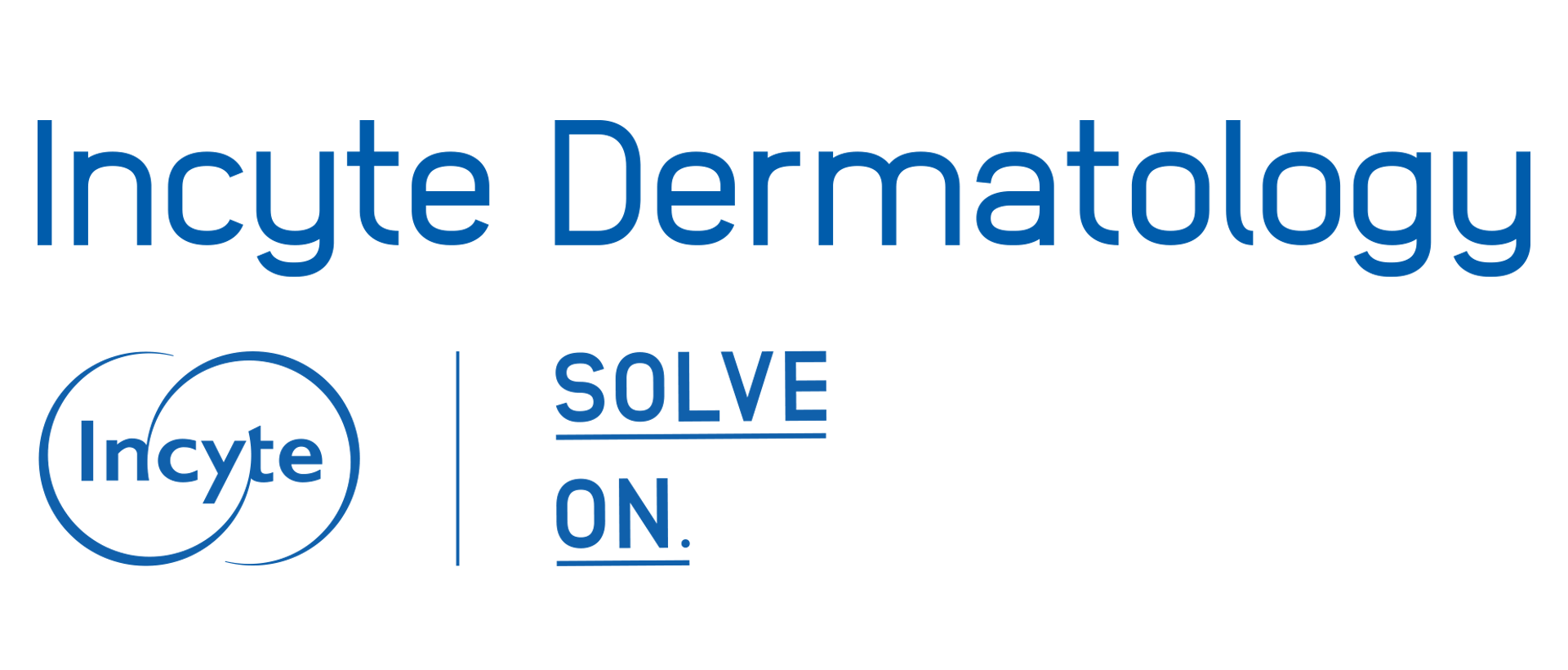Checking in on the adverse reactions to checkpoint inhibitors
 By Warren R. Heymann, MD
By Warren R. Heymann, MDOct. 17, 2016
Earlier this year there have been two posts devoted to adverse reactions of checkpoint inhibitors (“Thinking of Discontinuing the PD-1 Inhibitor Because of a Lichenoid Eruption? Don’t do it!” published on May 21st and “Joining the Bullae Pulpit: PD-1 inhibitors” posted on August 25th). Do further studies corroborate these studies? Yes.
Currently the PD-1 inhibitors include pembrolizumab (Keytruda) and nivolumab (Opdivo), which are FDA approved for advanced melanoma and non-small-cell lung cancer. Anti-PD-LI therapies include atezolizumab (Tecentriq), which is approved for locally advanced or metastatic urothelial cell carcinoma, and durvalumab, which has been given a breakthrough therapy designation by the FDA for bladder cancer. Ipilimumab (Yervoy) is an anti-CTL4 antibody indicated for metastatic or unresectable melanoma.
According to Sibaud et al, at least 40% of melanoma patients treated with anti-PD-1 therapy are faced with dermatologic adverse reactions that usually remain self-limiting and are easily managed. Nonspecific morbilliform eruptions and pruritus represent the most common manifestations. Lichenoid dermatitis or psoriasis may also develop. Vitiligo is also frequent in patients with melanoma but has not been reported in other types of solid cancers. Mucosal involvement may also occur, including xerostomia and lichenoid reactions. Although available data remain scarce, anti-PD-L1 antibodies present a similar dermatologic safety profile (1).
Shi et al performed a clinic-pathologic study on 20 patients with lichenoid mucocutaneous adverse effects seen in patients receiving anti-PD-1/PD-L1 treatment, either as monotherapy or in combination with another agent. Patients were 13 men and 7 women, with a mean (range) age of 64 (46-86) years. The majority of cases (16 [80%]) had a clinical morphology consisting of erythematous papules with scale in a variety of distributions. Biopsies were available from 17 patients; 16 (94%) showed features of lichenoid interface dermatitis. Eighteen patients were treated with topical corticosteroids, and only 1 patient required discontinuation of anti-PD-1/PD-L1 therapy. That patient had hypertrophic plaques of the extremities that failed to respond to topical steroids and oral prednisone. Only 4 of 20 patients (20%) developed peripheral eosinophilia. Sixteen patients (80%) were concurrently taking medications that have been previously reported to cause lichenoid drug eruptions (2). It should be noted that the common denominator was the lichenoid histology; clinically there was morphologic variability in distribution and appearance ranging from papules, to nodules, and erosions.
Mochel et al reported the case of 63 year-old man with metastatic melanoma who developed biopsy and serologically proven bullous pemphigoid (BP) after 21 months of pembrolizumab therapy. His BP improved with steroid therapy. Pembrolizumab was discontinued because of his near complete response to therapy – there was no evidence of BP following discontinuation of the drug; there was no rechallenge. The authors also detail the case of a 27year-old woman with metastatic melanoma (lymph node involvement followed by lymph node dissection) who developed biopsy-proven dermatitis herpetiformis (DH) one month after the initiation of ipilimumab therapy. Interestingly, four months earlier she was assessed for celiac disease because of weight loss (with no rash at that time), and was noted to have a positive titer of tissue transglutaminase antibodies. The rash itself was asymptomatic and was not treated — the ipilimumab was continued without with no evidence of melanoma recurrence (3). I find the latter case most intriguing for two reasons: 1) Is it possible that by dint of her pre-existing tissue transglutaminase antibodies, she was predisposed to having this adverse reaction upon exposure to ipilimumab? What inherent risk factors put other patients at an increased risk of adverse reactions? 2) DH is notoriously pruritic. Perhaps I’ve met a patient with DH that was asymptomatic, but I can’t think of one. Is there something different about her case? Could ipilimumab have modified her condition?
To date, various dermatologic adverse reactions have been reported with the checkpoint inhibitors, notably pruritus, morbilliform eruptions, and vitiligo. Lichenoid eruptions are common (possibly more so histologically than clinically), and blistering eruptions (predominantly BP and now DH) are increasingly reported. Fortunately for the vast majority of patients, these respond to therapy, and the anti-neoplastic therapy may be continued. Undoubtedly, as the indication for these agents expands for other malignancies, dermatologists must be knowledgeable about the recognition and management of these adverse reactions.
1. Sibaud V, et al. Dermatologic complications of anti-PD-1/PD-L1 immune checkpoint antibodies. Curr Opin Oncol 2016; 28: 254-63.
2. Shi VJ, et al. Clinical and histologic features of lichenoid mucocutaneous eruptions due to anti-programmed cell death 1 and anti-programmed cell death ligand 1 immunotherapy. JAMA Dermatol 2016; 152: 1128-36.
3. Mochel MC, et al. Cutaneous autoimmune effects in the setting of therapeutic immune checkpoint inhibition for metastatic melanoma. J Cutan Pathol 2016; 43: 787-91.
All content found on Dermatology World Insights and Inquiries, including: text, images, video, audio, or other formats, were created for informational purposes only. The content represents the opinions of the authors and should not be interpreted as the official AAD position on any topic addressed. It is not intended to be a substitute for professional medical advice, diagnosis, or treatment.
DW Insights and Inquiries archive
Explore hundreds of Dermatology World Insights and Inquiries articles by clinical area, specific condition, or medical journal source.
All content solely developed by the American Academy of Dermatology
The American Academy of Dermatology gratefully acknowledges the support from Incyte Dermatology.
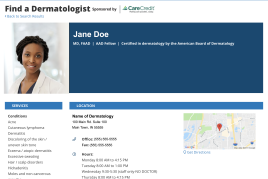 Make it easy for patients to find you.
Make it easy for patients to find you.
 Meet the new AAD
Meet the new AAD
 2022 AAD VMX
2022 AAD VMX
 AAD Learning Center
AAD Learning Center
 Need coding help?
Need coding help?
 Reduce burdens
Reduce burdens
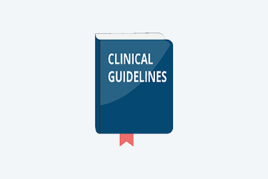 Clinical guidelines
Clinical guidelines
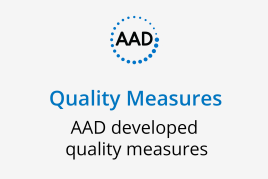 Why use AAD measures?
Why use AAD measures?
 Latest news
Latest news
 New insights
New insights
 Combat burnout
Combat burnout
 Joining or selling a practice?
Joining or selling a practice?
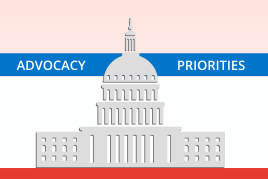 Advocacy priorities
Advocacy priorities
 Promote the specialty
Promote the specialty
